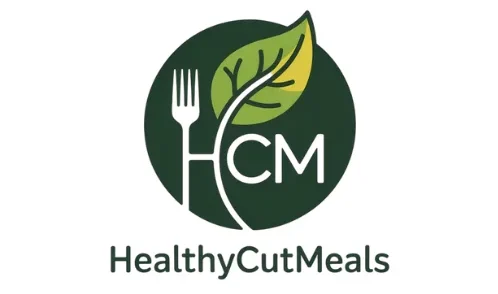Looking for a smoother caffeine kick without the jitters of regular coffee? Enter the mushroom coffee latte—an earthy, nourishing twist on your favorite morning ritual. This unique drink blends the energizing effects of coffee with the wellness benefits of functional mushrooms like Lion’s Mane, Reishi, and Cordyceps. Popular among health-conscious coffee lovers, it’s quickly becoming the go-to alternative for boosting focus, supporting immunity, and staying grounded throughout the day.
In this guide, we’ll break down everything you need to know about mushroom coffee lattes. From health benefits and how to make one at home, to taste tips and how it stacks up against traditional lattes—this article covers it all. Don’t miss our easy latte recipe later on or our answers to common questions like “Can you make mushroom coffee latte with milk?” and “Is mushroom coffee latte actually healthy?”
Looking for inspiration? Try our Protein Coffee Recipe for another morning wellness upgrade.
Table of Contents
Table of Contents
Health Benefits of Mushroom Coffee Latte
Immunity Boosting Properties of Mushroom Lattes
When you sip a mushroom coffee latte, you’re not just waking up your brain—you’re also helping your body defend itself. Functional mushrooms like Reishi and Chaga have been used in traditional medicine for centuries, particularly for immune support. These mushrooms are packed with beta-glucans, a type of polysaccharide that stimulates the immune system to fight off infections and inflammation.
Many people start adding mushroom lattes to their daily routine during flu season or after travel to keep their immune defenses strong. What’s more, Reishi is known for its adaptogenic qualities—it helps your body better manage stress, which is closely linked to immune health.
Combined with the antioxidant properties of coffee, a mushroom latte becomes a functional powerhouse for cellular protection and immune function.
Discover great ideas like this 3-Day Watermelon Detox to flush toxins naturally alongside your latte routine.
Mental Clarity, Energy, and Stress Support
One of the biggest reasons people make the switch to mushroom coffee is the clean, focused energy it provides. Unlike regular coffee—which can spike cortisol and cause jitteriness—mushroom coffee delivers a steady lift without the crash.
Lion’s Mane, in particular, is a nootropic mushroom that promotes neurogenesis—the growth of new brain cells. That’s why it’s often used for improving memory, focus, and overall cognitive performance. It supports the production of nerve growth factor (NGF), a protein crucial for brain health.
Cordyceps, on the other hand, supports natural energy levels and athletic performance. It’s often used by fitness enthusiasts for enhancing oxygen flow and endurance. Combined, these ingredients offer:
- Improved focus without anxiety
- Balanced mood throughout the day
- Better stress resilience
- No midday energy crash
Many users report being more productive and less distracted after switching from traditional lattes to mushroom versions.
And because this drink is caffeine-optional, it’s easy to scale up or down depending on your sensitivity. Some blends offer 50% less caffeine than a regular brew, making it gentler on the nervous system.
Whether you’re replacing espresso or just exploring new wellness drinks, the mushroom coffee latte is a game-changer.
Is Mushroom Coffee Actually Healthy?
Breaking Down the Nutritional Profile
Let’s cut to the chase: Yes, mushroom coffee is actually healthy, and it’s more than just wellness marketing hype. This latte blend combines the antioxidant and stimulant properties of coffee with the deep medicinal benefits of adaptogenic mushrooms.
Let’s look at the powerful ingredients that give a mushroom coffee latte its immune and cognitive edge
A standard cup of mushroom coffee latte made with quality mushroom extract contains:
| Nutrient/Component | Benefit |
|---|---|
| Beta-glucans | Immune modulation, anti-inflammatory |
| Polysaccharides | Gut health and cellular protection |
| Triterpenoids | Liver support, cholesterol balance |
| Caffeine (lower dose) | Energy boost without the crash |
| Amino acids | Brain and muscle support |
Because most mushroom powders are concentrated extracts, you’re getting a therapeutic dose in every sip—especially if the product contains dual-extracted or hot-water extracted mushroom blends, which are easier to absorb.
Even the milk you choose adds to the nutrition. Oat and almond milks bring in vitamins and fiber, while grass-fed dairy options can add healthy fats and protein.
Expert Opinions and Scientific Studies
More studies are emerging that validate what Eastern medicine has known for centuries—functional mushrooms can help balance, protect, and optimize the body. Here are a few highlights:
- Lion’s Mane (Hericium erinaceus): Shown in studies to stimulate nerve growth factor, aiding in memory and cognitive performance.
- Reishi (Ganoderma lucidum): Proven to reduce inflammation markers and improve sleep quality in clinical trials.
- Cordyceps militaris: Linked to improved oxygen uptake and ATP production, supporting energy and endurance.
Researchers from the Journal of Dietary Supplements found that participants consuming Reishi over 12 weeks experienced reduced fatigue and stress markers. Another 2021 study from the International Journal of Medicinal Mushrooms confirmed the anti-inflammatory and neuroprotective effects of Lion’s Mane extract.
So yes, it’s more than just hype. A well-made mushroom coffee latte is backed by science and may actually be a smart addition to your wellness toolkit.
If you’re looking for more natural ways to power your body, don’t miss our Healthy Baking & Treats Section full of guilt-free recipes to pair with your morning mug.
Thanks to adaptogens and antioxidants, your mushroom coffee latte doubles as a delicious self-care moment
How to Make a Mushroom Coffee Latte at Home

Step-by-Step Instructions (With and Without Frother)
Crafting a mushroom coffee latte in your kitchen is quick, cost-effective, and doesn’t require any barista training. Whether you’re into a luxurious foam or prefer a minimalist blend, here’s how you can do it:
With Frother or Steam Wand:
- Start your brew: Add 1 teaspoon of mushroom coffee powder (or steep a mushroom-infused coffee bag) into 6 oz of hot water. Mix well or let steep fully.
- Warm the milk: Heat ½ cup of your chosen milk until hot but not boiling.
- Froth it: Use a handheld frother or steam wand to make the milk nice and airy.
- Mix and pour: Slowly add your frothed milk to the brewed coffee and stir gently.
- Customize it: Add natural sweeteners or spices if desired.
No Frother? No Problem:
- Combine in a blender or shake bottle:
- 1 tsp mushroom coffee powder
- 6 oz hot water
- ½ cup heated milk
- Optional: ½ tsp coconut oil for added body and a dash of natural sweetener
- Blend for 20 seconds until smooth and slightly foamy.
- Pour into your favorite mug and sip slowly.
No expensive gadgets needed—just a few clean ingredients and a minute or two of prep.
Ingredients You’ll Need (Vegan & Regular Options)
You can personalize your latte with a variety of milk and add-in choices to suit your dietary style:
| Ingredient | Vegan Option | Classic Option |
|---|---|---|
| Mushroom Coffee | Lion’s Mane or Four Sigmatic blend | Fresh ground mushroom espresso |
| Milk | Oat, almond, cashew | Whole milk or 2% |
| Sweetener | Maple syrup, monk fruit | Raw honey |
| Flavor Boosters | Cinnamon, vanilla, nutmeg | Cocoa powder, vanilla extract |
The beauty of the mushroom coffee latte is how easy it is to adapt to your taste and lifestyle.
This drink is incredibly versatile. Whether you’re aiming for a dairy-free energy boost or just trying to spice up your morning, you can tailor your mushroom latte to match your mood or wellness needs.
Want a caffeine-free option? Use a mushroom-only blend or cut it with decaf.
Can You Make Mushroom Coffee with Milk?
Best Types of Milk for Mushroom Coffee Lattes
Absolutely, you can make mushroom coffee with milk, and in fact, many people prefer it that way. Milk not only adds creaminess and texture, but also balances out the earthy, sometimes bitter notes of medicinal mushrooms like Reishi and Chaga.
If you’re wondering which milk works best in mushroom coffee lattes, it depends on your taste and dietary needs. Here are some popular choices:
| Milk Type | Taste | Benefits |
|---|---|---|
| Oat Milk | Naturally sweet, creamy | High in fiber, great froth |
| Almond Milk | Light, nutty | Low-calorie, dairy-free |
| Coconut Milk | Rich, tropical | Healthy fats, thick texture |
| Cashew Milk | Smooth, buttery | Mild flavor, good foam |
| Whole Milk | Classic creamy texture | Protein and calcium-rich |
| Soy Milk | Neutral flavor | High protein, lactose-free |
The milk you choose can subtly transform the flavor of your mushroom coffee latte from earthy to indulgent.
If you enjoy café-style lattes, go for barista blends of plant-based milks—they’re designed to froth better and blend smoothly with hot liquids.
Using milk also makes the drink more palatable for those just easing into the world of mushroom beverages. The silky texture softens the earthiness and creates that cozy, indulgent feel you’d expect from a classic latte.
Dairy-Free Alternatives for a Healthier Sip
Dairy isn’t off the table, but many health-focused drinkers opt for non-dairy versions for digestion, anti-inflammatory goals, or personal preference.
Dairy-free mushroom lattes are often easier on the gut and align well with plant-based or paleo diets. Plus, nut and seed milks contain extra nutrients like:
- Vitamin E (great for skin and immunity)
- Magnesium (calms the nervous system)
- Healthy fats that improve mushroom absorption
Want a bit of extra creaminess without milk? Try blending in coconut oil or MCT oil. This not only enhances mouthfeel but can also give your brain a quick hit of clean-burning fuel—especially when paired with Lion’s Mane or Cordyceps.
Can You Make a Latte with Mushroom Coffee?
Using Instant Mushroom Coffee vs. Brewed
Yes—you can absolutely make a latte with mushroom coffee. In fact, it’s one of the most popular ways to enjoy these functional blends. Whether you use instant mushroom coffee or brew your own blend, the key is in how you prepare it.
Here’s a breakdown of both options:
| Method | Pros | Considerations |
|---|---|---|
| Instant Mushroom Coffee Powder | Fast and easy, perfect for travel or work | Make sure it’s high quality (dual-extracted mushrooms preferred) |
| Brewed Mushroom Coffee | Richer, deeper flavor | Takes more time; requires a French press or drip setup |
For a quick latte, many prefer instant powder—just dissolve it in hot water and add steamed milk. If you want a stronger, more aromatic experience, brew the mushroom coffee like a regular cup of joe, then froth and mix with milk.
No matter which method you choose, the result is the same: a nourishing, smooth latte that delivers focus, calm energy, and immune support.
The creamy base of milk helps create the classic comfort of a true mushroom coffee latte experience
Latte Recipes Featuring Lion’s Mane, Reishi & Cordyceps
Each type of mushroom coffee latte can be customized to suit your mental or physical goals
Here are a few simple latte ideas using different mushroom blends so you can tailor your benefits to your needs:
1. Focus Fuel: Lion’s Mane Latte
- 1 tsp Lion’s Mane coffee blend
- ½ cup hot water
- ½ cup oat milk
- Dash of cinnamon + 1 tsp maple syrup
Best for productivity and mental clarity
2. Stress Soother: Reishi Cacao Latte
- 1 tsp Reishi + cacao blend
- ½ cup warm almond milk
- ½ tsp vanilla extract
- Sprinkle of nutmeg
Perfect for evenings or high-stress days
3. Performance Boost: Cordyceps Power Latte
- 1 tsp Cordyceps-infused coffee
- ½ cup brewed mushroom coffee
- ½ cup coconut milk
- ½ tsp MCT oil
Great pre-workout or for sustained energy without the crash
These lattes offer targeted benefits that far exceed your average coffeehouse order—and they’re surprisingly easy to whip up at home.
Want to explore more energy-boosting drinks like these? Don’t miss our Detox & Metabolism Boosters lineup.
Taste, Texture, and Aroma

What Does a Mushroom Coffee Latte Taste Like?
Let’s be real—mushroom coffee latte sounds a little strange if you’ve never tried it. But the taste? Surprisingly smooth and satisfying.
The flavor depends heavily on the type of mushroom used, the coffee blend, and your milk or sweeteners. In general, you can expect:
- Earthy and slightly nutty undertones (from Reishi or Chaga)
- Mellow bitterness similar to a dark roast
- Creamy richness if milk or plant-based alternatives are added
- Subtle herbal notes, especially when spices like cinnamon or cardamom are used
Think of it like an herbal coffee with less acidity and a rounder, more grounding flavor profile.
Mushroom coffee doesn’t taste like sautéed mushrooms—there’s no umami or savory overload here. It’s more like a calming, grounded version of a traditional latte, especially when made with oat milk or coconut milk.
If you’re already into matcha, golden milk, or other functional lattes, you’ll likely enjoy mushroom coffee’s balanced, earthy vibe.
How to Improve Flavor Without Losing Benefits
With the right milk and spices, your mushroom coffee latte can taste just as rich as any specialty café drink.
Not everyone falls in love with the flavor on the first sip—but that’s okay. Here are some quick ways to upgrade your mushroom coffee latte without compromising its health benefits:
| Tip | Why It Works |
|---|---|
| Add cinnamon or nutmeg | Balances bitterness, adds warmth |
| Use vanilla extract | Rounds out earthy tones |
| Sweeten naturally | Maple syrup, honey, or monk fruit enhance flavor |
| Add a pinch of sea salt | Reduces bitterness, enhances creaminess |
| Pair with dark chocolate | Deepens taste and supports cognitive function |
Some also like to add a scoop of collagen powder, protein, or coconut butter for texture and added nutrients.
If you’re still adjusting to the taste, start by blending a small amount of mushroom coffee with your usual coffee grounds.
When and How Often to Drink It
Best Time of Day to Enjoy Your Latte
Timing is everything—especially when it comes to functional drinks like a mushroom coffee latte. Unlike traditional coffee, which can leave you jittery or disrupt sleep, mushroom coffee offers more flexible options for when to enjoy it.
Here’s a quick guide based on your goals:
| Goal | Best Time to Drink |
|---|---|
| Focus and productivity | Morning or early afternoon |
| Stress relief or relaxation | Late afternoon or evening (use Reishi) |
| Workout energy boost | 30 minutes pre-workout (Cordyceps blend) |
| Sleep support | 1–2 hours before bed (with calming mushrooms only) |
For most people, the sweet spot is morning to mid-afternoon, especially if the blend contains caffeine. You’ll get the mental clarity you want without interfering with your nighttime rest.
If your latte is made from a non-caffeinated mushroom blend, like Reishi or Chaga, you can safely sip it after dinner or even before bed.
Sipping a mushroom coffee latte daily is an easy way to support your nervous system without a caffeine overload.
Daily Serving Recommendations and Tips
You might be wondering: how much mushroom coffee is too much?
While there’s no universal dose, most health practitioners recommend 1–2 servings per day, depending on your personal tolerance and health goals.
Keep these simple tips in mind as you get started:
- Start small: Begin with half a serving and work up to see how your body reacts.
- Check caffeine content: If your blend includes regular coffee, moderate your intake like you would with traditional brews.
- Rotate mushroom types: Switching between Lion’s Mane, Reishi, and Cordyceps gives your body a full spectrum of benefits without overloading any one system.
- Stay hydrated: Like coffee, mushroom lattes can be dehydrating. Balance it out with water or herbal tea throughout the day.
Adding it to your routine is simple. Have it as your morning drink, your afternoon pick-me-up, or even as a post-dinner ritual to wind down, depending on the type of mushrooms used.
Make the mushroom coffee latte part of your everyday routine, just like brushing your teeth or stretching
Potential Side Effects and Who Should Avoid It
Are There Any Risks With Functional Mushrooms?
While a mushroom coffee latte is generally safe and well-tolerated, it’s important to remember that these drinks contain bioactive compounds. That means they can interact with your body—and sometimes your medications.
Here are a few potential side effects some individuals might experience:
- Digestive upset: For those new to mushrooms, mild bloating or gas may occur in the beginning.
- Headaches or dizziness: Rare, but can happen if taken on an empty stomach or in excess.
- Sensitivity to caffeine: Even with lower caffeine levels, mushroom coffee can still cause sleep disturbances in sensitive individuals.
These effects are usually mild and temporary, especially when starting with a small dose and slowly increasing.
If you experience anything beyond mild discomfort, it’s wise to stop use and consult your healthcare provider.
Precautions for Pregnant Women or Those with Allergies
Pregnant or breastfeeding women should use caution. While mushrooms like Reishi and Lion’s Mane have historical use in natural medicine, there’s not enough clinical data to guarantee their safety during pregnancy.
It’s best to:
- Speak with a doctor or naturopath before incorporating mushroom coffee into your daily routine if you’re pregnant or nursing.
- Check for allergies to fungi or molds, especially if you have a known history of food sensitivities.
If you’re taking blood thinners, immunosuppressants, or diabetes medications, mushrooms like Reishi and Cordyceps may enhance or interfere with their effects. Always consult with your physician before adding functional mushroom products to your wellness plan.
That said, for most healthy adults, sipping a daily mushroom coffee latte can be a gentle, supportive ritual with a host of long-term wellness perks.
Conclusion
A mushroom coffee latte isn’t just a drink—it’s a wellness ritual wrapped in comfort and earthy richness.
If you’re looking for a coffee alternative that delivers energy, clarity, and wellness, the mushroom coffee latte is worth a sip. It combines the richness of traditional lattes with the powerful benefits of functional mushrooms like Lion’s Mane and Reishi—supporting your mind, immune system, and long-term health.
Easy to make at home, customizable to your taste, and loaded with nutrients, this adaptogenic latte is a gentle upgrade to your daily ritual. Whether you’re seeking better focus, fewer crashes, or a more grounded way to start your day, mushroom coffee just might become your new favorite brew.
Once you experience the calm, steady boost of a mushroom coffee latte, there’s no turning back.
For more recipes follow me in page Facebook and Pinterest .
FAQs
Can you make a latte with mushroom coffee?
Yes, you absolutely can make a latte with mushroom coffee. In fact, it’s one of the most popular ways to enjoy functional mushrooms like Lion’s Mane, Reishi, and Cordyceps. Simply brew your mushroom coffee, heat your choice of milk, and combine them just like a regular latte. This method makes it easier to balance out the earthy flavor of mushrooms while still reaping the benefits.
Can you make mushroom coffee with milk?
Definitely. Milk—whether dairy or plant-based—blends beautifully with mushroom coffee. Many people prefer using milk because it softens the taste and creates a creamier, more traditional latte feel. Popular non-dairy options like oat milk, almond milk, and coconut milk also add nutrients while enhancing texture and flavor.
Is mushroom coffee actually healthy?
Yes, mushroom coffee is considered healthy by many holistic health experts. It offers a range of benefits from improved focus and reduced stress to better immune function. Thanks to adaptogens and antioxidants found in mushrooms like Reishi and Lion’s Mane, it supports both mental clarity and physical wellness—all with less caffeine than traditional coffee.
What is mushroom latte?
A mushroom latte is a wellness drink made by combining medicinal mushroom extracts—such as Lion’s Mane, Reishi, or Chaga—with steamed milk and often a base of coffee or herbal brew. The result is a creamy, nourishing beverage that promotes energy, focus, and balance. It’s a smart alternative for those seeking a calming, functional coffee substitute.

Mushroom Coffee Latte – The Natural Way to Energize Your Mornings
- Total Time: 5 minutes
- Yield: 1 serving 1x
- Diet: Gluten Free
Description
This mushroom coffee latte blends earthy adaptogens like Lion’s Mane or Reishi with steamed milk for a creamy, balanced brew. It delivers calm energy, mental clarity, and immune support—all with less caffeine than traditional coffee.
Ingredients
1 tsp mushroom coffee powder (Lion’s Mane, Reishi, or Cordyceps blend)
½ cup hot water (just off boil)
½ cup milk of choice (oat, almond, or dairy)
1 tsp maple syrup or honey (optional)
¼ tsp ground cinnamon (optional)
¼ tsp vanilla extract (optional)
Pinch of sea salt (optional, enhances flavor)
Instructions
In a mug, mix the mushroom coffee powder with hot water and stir until dissolved.
In a separate pot or frother, heat the milk until steaming but not boiling.
Froth the milk using a handheld frother, steam wand, or blender.
Pour the frothed milk into the mushroom coffee base.
Stir in maple syrup, cinnamon, or vanilla if using.
Top with a dusting of cinnamon or cocoa for garnish.
Serve hot and enjoy your adaptogenic wellness boost.
Notes
For a richer latte, blend in ½ tsp MCT oil or coconut butter.
Make it iced: Chill the mushroom coffee base, pour over ice, then add cold frothed milk.
Use decaf mushroom blends for an evening-friendly option.
Not into sweeteners? Skip them—this latte is still flavorful without sugar.
Store leftover mushroom coffee base in the fridge for up to 2 days.
- Prep Time: 3 minutes
- Cook Time: 2 minutes
- Category: Beverages
- Method: Blended / Frothed
- Cuisine: Wellness, Functional, American
Nutrition
- Serving Size: 1 cup
- Calories: 65 kcal
- Sugar: 4g
- Sodium: 85mg
- Fat: 2.5g
- Saturated Fat: 0.5g
- Unsaturated Fat: 1.8g
- Trans Fat: 0g
- Carbohydrates: 7g
- Fiber: 1g
- Protein: 1g
- Cholesterol: 0mg


